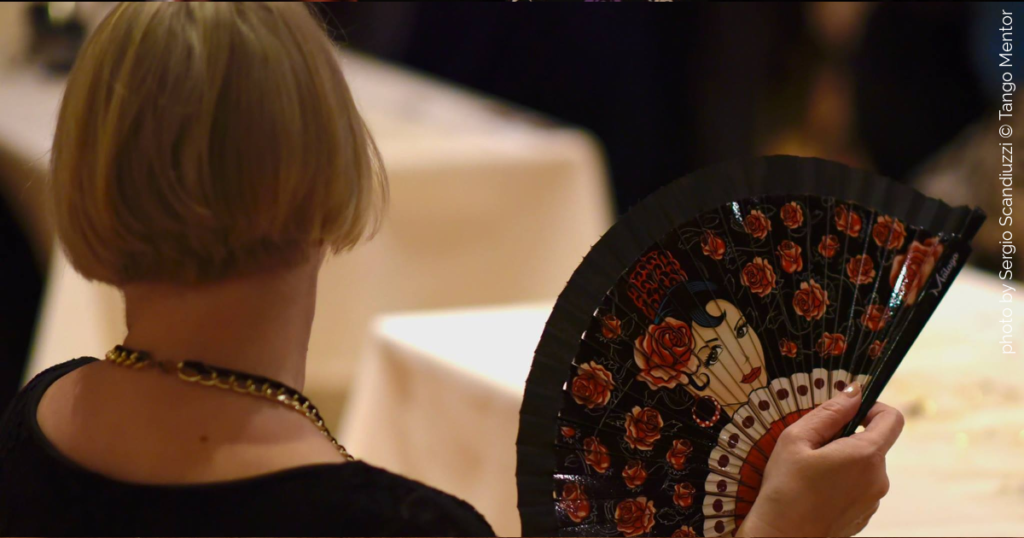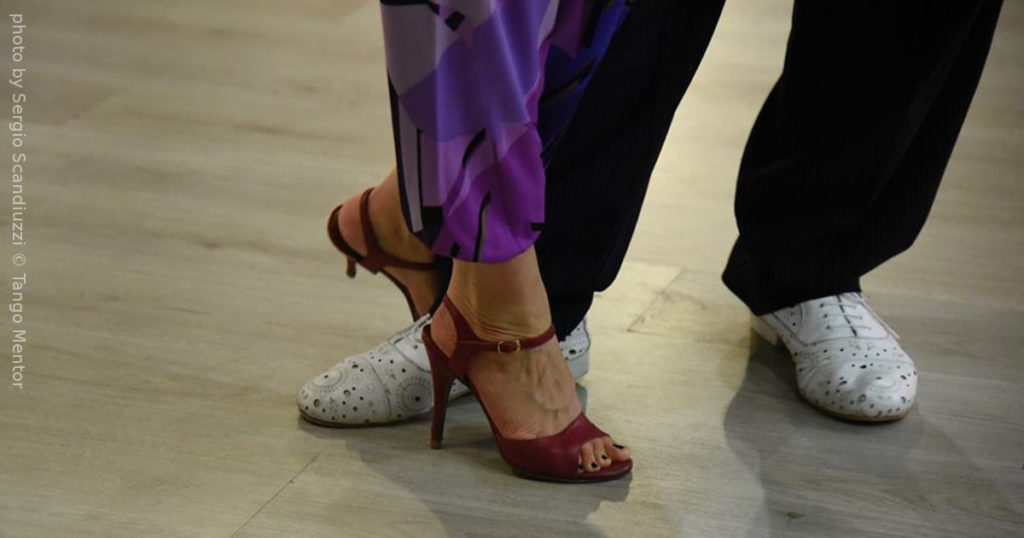 (This article first appeared in ‘Gancho’, december 2016 – this is just a reprint for the readers of Tango Mentor)
(This article first appeared in ‘Gancho’, december 2016 – this is just a reprint for the readers of Tango Mentor)
As we say goodbye to the old year our eyes look towards the next one and we try to figure out what tango events should we put on our calendar. I mean, we all wish to travel more if we just had enough money and time. Since most of us are not that lucky to have limitless resources, little wisdom when we make choice would help a lot.
My intention behind this article is to help tango travelers to plan their year little wiser. I mean, when you travel almost every month, as I did the past few years, you begin to notice some patterns that might be useful to less experienced.
I think that this article will be most valuable to the absolute beginners in the tango travelers world, but little more experienced will find some wisdom here as well.
Since I travel a lot, many people think that I spend a lot of money. That is actually not true. If you plan your trips wisely and if you do not have strict time limitations, the trips can be significantly cheaper than one might imagine.
For example, if you create your traveling plan wisely and if you buy your tickets early on, you may save almost 50% of the ‘regular’ price. Sometimes this goes for the accommodation as well.
[Tweet “We all wish to travel more if we just had enough money and time”]
Those were examples just to give you ideas, but this article is not only about how to make your trip cheaper. It is about how to chose the right events for you as well. Even cheaper, the trips are not free, so you should not spend your money and time on ones that will not make you enjoy.
OK than, lets get in to it.
1. Know your mindset – First thing you have to do when you start planing your tango trips is to ask yourself what kind of dancer are you. This will define what kind of events you should look for.
Ask yourself what is the purpose of your tango journey? Are you a person who enjoys the feeling in the embrace or you feel good when you do impossible moves? Do you prefer to be relaxed and party, or you want to go to events where you can experience the full feeling of the Argentine tango culture? What is your level and experience?
Those questions will define what kind of dancer you are and where do you belong, but do not forget that people evolve over time. What I liked in the beginning I despise now. What was hard to accept when I was beginner, I admire now. So, return to these questions from time to time.
In this point I am going to list a group of three types of events which will help you decide where do you belong. Please have in mind that my experience is mostly from what is going on in Europe – in your particular region some of those types may not even exist.
a) The festivals – Those are the most popular type of events. They are also the biggest. I have herd about festivals with more than 5.000 participants. Festivals usually do not limit the number of the participants and they do not ask questions like how experienced are you? To participate on this kind of events it is enough to register on time and to pay.
Festivals are usually structured with two types of activities: milongas and workshops. Some of the tango celebrities are invited to have classes during day and at the evening milongas they have a show.
Festivals are ideal for people who are at the very beginning of their tango journey, but I would not recommend them to the more experienced. Festivals tend to become too chaotic and overcrowded. They are also very expensive.
b) The marathons – The idea of the marathons is to gather tango dancers from different communities for a weekend of just dancing. There are daily and evening milongas. Marathons do not include stars and show dances, nor workshops and classes.
Registering to a marathon might be a little harder since the organizers control who is entering in order to keep a proper gender balance and the quality of dancing. To some of these events you can enter only with a recommendation from other dancers or if the organizer knows and approves you.
The marathons are smaller than the festivals and they tend to gather the best of the dancers. They are also slightly cheaper than the festivals.
c) The encuentros – Festivals are open for everyone, marathons chose only the best. What encuentros do? They chose only ones who are focused on social tango, ones who are respectful dancers. The organizers of the encuentros usually do not advertise their events so this is a hidden world to the most of the dancers, specially beginners.
The participants of encuentros are the dancers who are focused more on the embrace than on the showy steps. They also tend to focus on the respect, the codigos and the traditions. The music is very strict – only the Old guard and Golden age.
The form you have selected does not exist.
Encuentros are also gender balanced, they limit the number of the participants to usually around 100 and they also have a “one tanda rule” in hope that everyone will have their turn with everyone.
If you are a dancer who admires the tango traditions from the Golden Age and if you prefer to hug and not to make show steps, than encuentros are what you need.
2. Traveling connections – Tango events are usually limited to the weekends. Friday, Saturday, Sunday. Some of them have a couple of days extra, but basically all of them stick to the weekends.
This means you will have to arrive on Friday and after a few hours of rest, go to the evening milonga. Than, on Sunday or Monday, you will have to get to a plane and get to work well rested.
This plan might work only if your connections are comfortable and simple. Complicated and long trips are acceptable only in one case: if you travel on budget and have free time. I had many experiences, some of them included waiting for a transfer almost 12 hours. Some of them were even with a sleepover, just to keep the price low. If the accommodation is not a problem, you might also arrive earlier or later, just to have acceptable travel ticket price. This way you will also have a day or two to look around.
If you have to stay one or two days more, my advice is to chose coming earlier, rather than staying little longer after the event finishes. This way, when it starts you will be well rested.
Before you chose the event you want to travel to, take time to check out how is the city where it takes place connected to your city. Check flights, check buses, check driving time. If you travel by plane, I also recommend you to check how is the airport connected and what are the costs of the transportation. It is also important to check where is the venue.
All this details will help you choose wise. The first step has to be right. If needed, ask for a help from the organizers by email or in a private message on Facebook. Many of them take care their guests to have a smooth experience so they prepare a traveling plan for them from airport to the town or to the venue itself.
3. Check the prices – No matter if you travel on a budget or you are a high class traveler, it is always vise to check out where you go and what prices should you expect. Being surprised by the prices can often spoil your experience.
First thing you should worry about is the accommodation. There are few things you should do about it.
a) If you travel on a really tight budget you might want to choose a couch surfing. Check out the regular ones (I mean the ones for non-tango people). If this does not work, or in case you would rather stay with tango people, you have the option to stay at home of local dancers. If you already have friends from the town you travel to, write them and explain your situation, some might be open to offer you the couch in their living room. One more option is to write to the organizer or to the local school and ask them if they can find you some free couch for sleeping.
b) If you chose little more comfortable option, the hostels are the best next one. Ask the organizer to recommend what is the most affordable hostel, and also, the closest one to the venue. Proximity to the venue will save you some money for local transport.
c) Travel in groups. This way you might chose to take one whole separate room in a hostel just for you – or, in some cases, to book all of the beds in a small hostel and to have it just for the group. Traveling in the groups opens up the possibility to book a whole apartment (via Airbnb) which is even better option.
High class travelers should also consult the organizers before they decide to book their hotel, since as locals, they can point out if there is a problem with the selection.
Next option is to check out the food prices. If you have accommodation where you can prepare your meals, the spending on food will be much lower. Buying in the supermarkets is significantly cheaper than eating in restaurants.
To be sure about the prices my best advice is to ask local dancers. Other option is to ask people who already visited that event. They can also point out a places that you should try local cuisine at reasonable prices.
The spendings on the accommodation and the food are significant part of your travel expenses, so you should have an idea about them when you chose what event you will attend next year.
4. Where are your friends – I wrote about the nature of the event, about the traveling expenses, sleeping and food expenses. I want to finish this list with the most important one – the quality of the event.
Do not choose the events for their advertisement investments. That is the worst thing you can do. Quality of the tango event is almost never connected with the amount of money and effort the organizers trows in advertising it.
I would rather suggest for you to ask people about their experience. Or even better, to ask them where they plan to travel. Before you choose the event check out who plans to visit it. Although the “going” list on Facebook is never an attendance list, you can use it as a starting point. Ask some of your friends on that list why they chose this event and are they seriously planing to visit it. The “going” lists will also point out where the good dancers plan to travel – so you can know what is the quality of the event.
I would also advice you to start your planing of the year with a little private survey. Ask your favorite dancers where they plan to visit this year. Sometimes you will be surprised how the quality of the dancing tends to concentrate on a few events. This will give you a clear picture where should you visit and what should you put on your calendar for the next year.
What is your experience? If you have more to add on this list I would appreciate if you share it in the comments or in a private message. I would be happy to include it in some of my next articles.
If you liked this article please share it with your friends on Facebook or Twitter, or in a private message, so they can have benefit from my advice. If you need some more advice please consider some of my mentoring programs.


